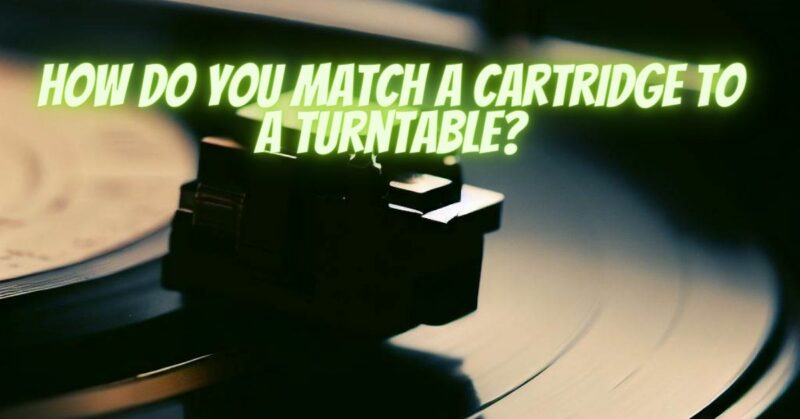In the world of analog audio, where every nuance matters, the synergy between a turntable and its cartridge is paramount. The choice of cartridge can significantly influence the sound quality, tracking accuracy, and overall performance of your turntable setup. Matching a cartridge to a turntable involves careful consideration of various factors to ensure that your analog experience is nothing short of exceptional. Here’s a comprehensive guide to help you achieve the perfect harmony between your cartridge and turntable.
Understanding Compatibility
The journey to matching a cartridge to a turntable begins with understanding compatibility. The goal is to find a cartridge that seamlessly integrates with your turntable’s mechanical and electrical characteristics. Here are the key factors to consider:
- Mounting Type: Turntables typically feature either a 1/2 inch mount or a P-mount (Plug-and-Play mount). Ensure that the cartridge you choose is compatible with the mounting type of your turntable. If your turntable allows for interchangeable headshells, a 1/2 inch mount cartridge offers more versatility.
- Tracking Force Range: Different cartridges require specific tracking forces to achieve optimal performance. Consult the specifications of your turntable to determine its acceptable tracking force range. Choose a cartridge that falls within this range to avoid compromising sound quality or damaging your records.
- Tonearm Characteristics: The tonearm of a turntable plays a crucial role in tracking accuracy and overall sound quality. Consider the effective mass, length, and design of your tonearm when selecting a cartridge. Cartridges have varying compliance levels that need to match the tonearm’s characteristics for proper tracking and reduced wear on both stylus and records.
- Output Level: Cartridges have varying output levels, typically measured in millivolts (mV). Check whether your turntable’s phono preamp or amplifier can accommodate the output level of the cartridge you’re considering. Low-output cartridges require more amplification, while high-output cartridges are suitable for systems with standard preamps.
Setting Your Preferences
Choosing the right cartridge isn’t just about technical compatibility; it’s also about aligning with your musical preferences and listening habits. Here’s how to factor in personal preferences:
- Stylus Profile: Different stylus shapes (elliptical, conical, line contact) offer distinct tracking abilities and sound characteristics. Elliptical styluses provide a balance between accuracy and groove protection, while line contact styluses excel in tracking complex passages.
- Sound Signature: Cartridges can have varying sound signatures, ranging from warm and rich to detailed and analytical. Consider the genre of music you primarily listen to and whether you prefer a more colored or neutral sound. Reading reviews and seeking recommendations can help you understand the sonic qualities of different cartridges.
- Upgrade Potential: If you’re looking to upgrade your cartridge, consider a model that offers room for improvement. Some turntables allow for cartridge upgrades, allowing you to elevate your analog experience over time.
Seeking Expert Advice
If you’re uncertain about which cartridge to choose, don’t hesitate to seek expert advice. Turntable specialists, audio forums, and knowledgeable dealers can provide valuable insights based on your turntable model, listening preferences, and budget. They can help you navigate the wide array of cartridge options and make an informed decision.
Matching a cartridge to a turntable is an art that combines technical knowledge with personal preference. It’s a journey that involves research, experimentation, and the pursuit of the perfect audio experience. By considering compatibility factors, understanding your musical preferences, and seeking expert guidance, you can achieve a harmonious blend of turntable and cartridge that elevates your analog audio journey to new heights.


